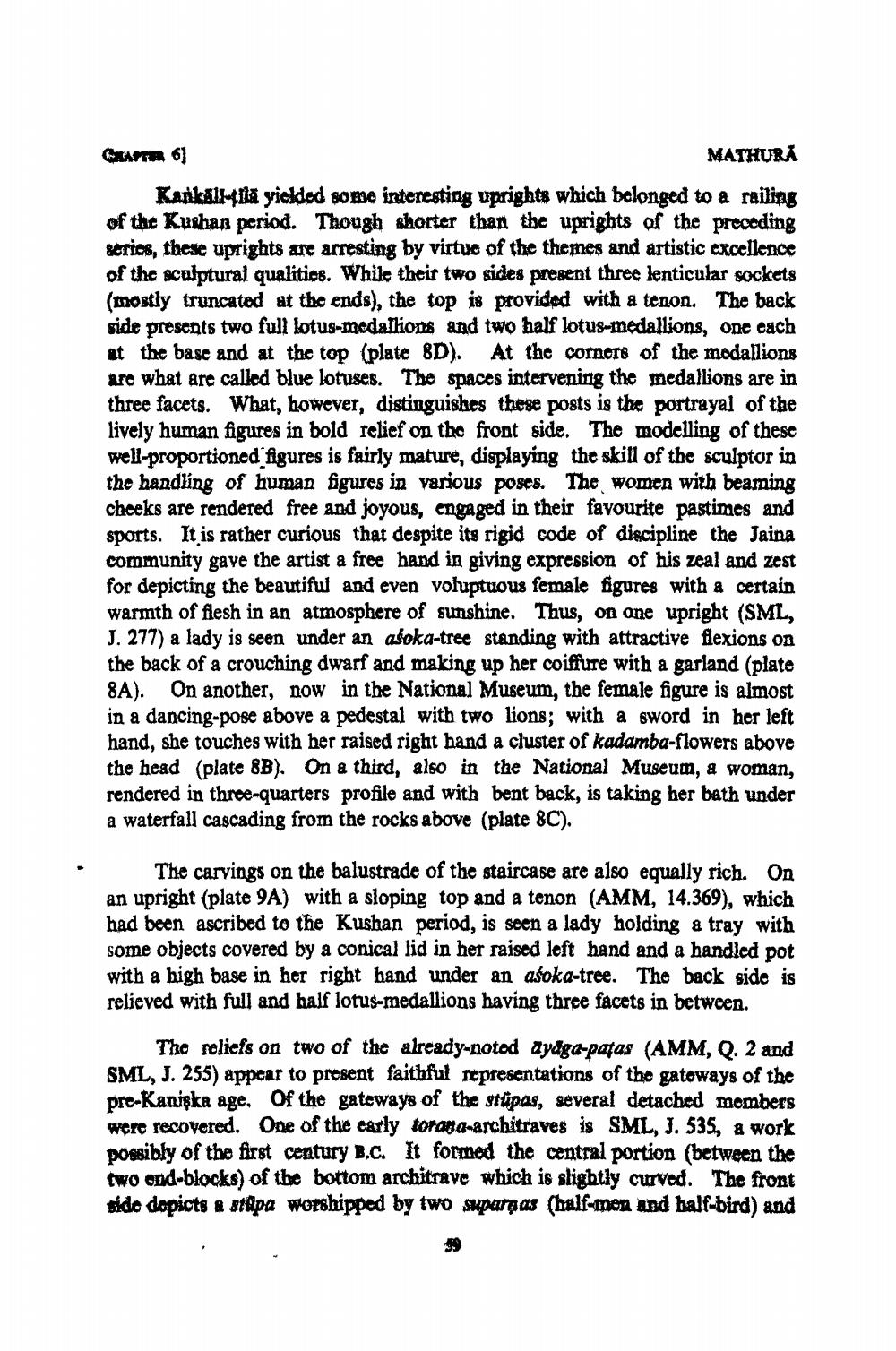________________
MATHURA
Kankalwila yielded some interesting uprights which belonged to a railing of the Kushan period. Though shorter than the uprights of the preceding series, these uprights are arresting by virtue of the themes and artistic excellence of the sculptural qualities. While their two sides present three lenticular sockets (mostly truncated at the ends), the top is provided with a tenon. The back side presents two full lotus-medallions and two half lotus-medallions, one each at the base and at the top (plate 8D). At the corners of the modallions are what are called blue lotuses. The spaces intervening the medallions are in three facets. What, however, distinguishes these posts is the portrayal of the lively human figures in bold relief on the front side. The modelling of these well-proportioned figures is fairly mature, displaying the skill of the sculptor in the handling of human figures in various poses. The women with beaming cheeks are rendered free and joyous, engaged in their favourite pastimcs and sports. It is rather curious that despite its rigid code of discipline the Jaina community gave the artist a free hand in giving expression of his zeal and zest for depicting the beautiful and even voluptuous female figures with a certain warmth of flesh in an atmosphere of sunshine. Thus, on one upright (SML, J. 277) a lady is seen under an asoka-tree standing with attractive flexions on the back of a crouching dwarf and making up her coiffure with a garland (plate 8A). On another, now in the National Museum, the female figure is almost in a dancing-pose above a pedestal with two lions; with a sword in her left hand, she touches with her raised right hand a cluster of kadamba-flowers above the head (plate 8B). On a third, also in the National Museum, a woman, rendered in three-quarters profile and with bent back, is taking her bath under a waterfall cascading from the rocks above (plate 8C).
The carvings on the balustrade of the staircase are also equally rich. On an upright (plate 9A) with a sloping top and a tenon (AMM, 14.369), which had been ascribed to the Kushan period, is seen a lady holding a tray with some objects covered by a conical lid in her raised left hand and a handled pot with a high base in her right hand under an aśoka-tree. The back side is relieved with full and half lotus-medallions having three facets in between.
The reliefs on two of the already-noted aydga-patas (AMM, Q, 2 and SML, J. 255) appear to present faithful representations of the gateways of the pre-Kaniska age. Of the gateways of the stupas, several detached members were recovered. One of the carly toraja-architraves is SML, J. 535, a work possibly of the first century B.C. It formed the central portion (between the two end-blocks) of the bottom architrave which is slightly curved. The front side dopicts a stapa worshipped by two suparpas (half-men and half-bird) and




